If you’ve been questioning the quality of grocery store chicken and want to increase your self-sufficiency, you’re in the right place! Raising your own meat chickens is one of the best ways to solve all of these concerns!
Growing garden produce and raising chickens for eggs is an excellent start, however, once you can put meat on the table, you’ll be unstoppable.
This comprehensive article will answer all of your questions about raising broiler chickens, specifically red rangers. We’ve been raising them since 2016 and have learned A LOT along the way. I’ll fill you in on everything I wish we had known when we started!
Do you live in the city? Don’t worry! I have ideas for you, too!
*Disclosure: This post may contain affiliate links to products (including Amazon). I’ll earn a small commission if you make a purchase through my link, at no additional cost to you! Regardless, I only link to products that I personally use on our homestead or believe in.
What Is a Ranger Chicken?
It’s hard to tell you exactly what a Ranger chicken is because the genetics behind the breed are a highly protected secret in the hatchery industry. However, they are likely a combination of Delawares, New Hampshires, Rhode Island Reds, Plymouth Rocks, and Leghorns.
The name varies a bit from hatchery to hatchery, but they are all very similar. You’ll find names from Red Ranger and Rudd Ranger, to Freedom Rangers and even Jackie chickens.
Rangers are considered a hybrid broiler, but they don’t grow quite as scary-fast as the traditional Cornish Cross and thus, don’t carry as many of the risks.
They have red and black feathers, yellow legs, and skin and typically finish out in 11-16 weeks (depending on conditions and gender). We’ve been raising them since 2016 and I’ve been very impressed with them each year. They are hardy, fairly active, and delicious!
6 Reasons Why You Should Raise Ranger Chickens
We LOVE raising rangers as meat chickens, and I know you’ll love them too! Let’s chat about why they’re such a great addition to any homestead.
#1 Self-sufficiency and control over the product
Self-sufficiency is king on the priority list! If you have a garden or a handful of chickens for eggs, that is amazing! However, once you can put meat on the table… then you’re really on your way to self-sufficiency.
Not only is chicken an amazing source of protein, vitamins A & D, B-vitamins, iron, zinc and copper, but you can also use the bones and feet for making bone broth, and render down the skin and fat for schmaltz. The organs are also packed full of nutrients!
Lastly, if you raise your own meat chickens, you have full control over how they were raised, what they ate, and how they were processed. The more I read about the commercial broiler industry, the more disgusted I get…
#2 Red ranger chickens are more nutritious than Cornish Cross
Ohhh where do I start!? I have so many thoughts on this topic. When we decided to start raising meat chickens, I read the book Pastured Poultry Profits by Joel Salatin and it was EYE OPENING. It’s an old book and a little disorganized, but there’s great information in there.
I used to believe that any chicken would produce a healthy and nutrient-dense meal as long as they were out on pasture… wrong!
Time on pasture
When raising meat chickens, you typically wait until they are at least 2-3 weeks old to move from the indoor brooder to the outdoors. That’s because when they are a few days old, they are delicate, learning the basics, and need a heat lamp to stay warm.
Because of this delay, they are already missing out on 2 weeks on pasture. Therefore, if you’re raising the Cornish Cross broilers (which are butchered at only 6-8 weeks), that means there’s only a few weeks left for them to obtain those vital nutrients from the grass, bugs, sunshine, etc.
Basically, it doesn’t happen to the full extent that we are hoping for. A pasture-raised Cornish Cross is better than its conventionally-raised counterpart, but it’s still not what you think you’re getting.
The research behind it
There is research out there now that confirms what we’ve believed to be true: pasture-raised broilers have more vitamins D & E and a better omega 6:3 ratio (inflammatory vs anti-inflammatory fats) than broilers raised in confinement (Ponte Study #1, APPPA Article, Ponte Study #2).
I haven’t been able to find any studies comparing pasture-raised Cornish Cross to slower-growing breeds like the Red Ranger to confirm my suspicions there. If you know of one, please let me know!
I have noticed that our red ranger hens (which usually take a few more weeks to reach finish weight compared to roosters) have a deeper hue of gold to their fat and their muscle is more richly colored compared to the roosters. It could be a gender thing? However, I really think it’s due to the few extra weeks outdoors.
#3 Red ranger chickens are healthier than Cornish Cross
If Cornish Cross broilers were allowed to continue to grow past 8 weeks, they would eventually die from leg or heart problems. They are eating machines. If you decide to raise them, you actually have to remove their feed at night so that they don’t gorge themselves.
Rangers have a bit more sense and aren’t quite as feed-crazy. I’ve always left the feed out there 24/7 and they can self-moderate. I’ve never had a Red Ranger experience a heart attack or break their legs from too rapid of growth. WHEW!
Rangers also are driven to forage for bugs and greens more, meaning more nutrients are ultimately going to end up on your plate. They still aren’t quite as apt to forage as your egg-laying breeds, but they still do a pretty good job.
Lastly, Rangers are much more proportional. Cornish cross chickens are bred to grow massive breasts to the point where they fall forward, whereas the Red Ranger chicken is evenly proportioned and has a good balance of white and dark meat. We love dark meat around here, so that’s a WIN for us!
#4 Ranger chickens are more economical than dual-purpose breeds
Anytime you have a slower-growing animal, they are going to eat more than their faster-growing counterpart to reach the same weight. There’s no way around it. Red rangers are less economical to raise than Cornish Cross, however, they are more economical than your standard dual-purpose breeds.
I’ve been tracking my costs for the last several years and I’m happy to share them with you!
- 2016: No data 🙂 I was still learning!
- 2017: $460.65 ÷ 110.19 lbs (dressed) = $4.18/pound (22 red rangers and 650 lbs of feed)
- 2018: $570.35 ÷ 134.1 lbs (dressed) = $4.25/pound (24 red rangers and 650 lbs of feed)
- 2019: $433.49 ÷ 103 lbs (dressed) = $4.20/pound (21 red rangers and 494 lbs of feed)
- 2020: 2020… need I say anything more? We raised them, but I didn’t record anything.
- 2021: $400.87 ÷ 91.2 lbs (dressed) = $4.39/pound (20 red rangers and 515 lbs of feed)
- 2022: $391.01 ÷ 99.4 lbs (dressed) = $3.93/pound (21 red rangers and 625 lbs of feed) – we used more feed because we had more hens this year. Thankfully, I found a cheaper feed source though, so it ended up okay!
- 2023: We moved to a new homestead, so it was a bit chaotic and I wasn’t able to track everything like I usually do. Sorry!
As you can see, raising your own pastured, organic red ranger chickens saves some money, but not a ton. It is still an investment, especially if you’re a small homesteader like me and aren’t buying bulk feed with discounts.
*Expect costs to be ~1/3 less for the efficient Cornish Cross and ~2x more for slow growing dual-purpose breeds.
#5 Rangers are EASY to raise and care for!
No coop
Meat chickens are often raised in portable chicken tractors. These are a basic structure that are moved daily so they have fresh greens every day. This structure also protects them from predators and provides basic shelter. No need for a fancy coop!
We built ours using the Salatin tractor design that we found in his Pastured Poultry Profits book, but we modified the size from 12’x12’ to 8’x8’ since we aren’t a large operation. We also made it a bit taller so that we could climb in, if needed.
A fox moved into our area in 2022 and dug underneath our chicken tractor, taking ALL 23 of our red ranger chicks. We were devastated and needed a new game plan. Definitely check out my article How to Make a Predator Proof Chicken Tractor for all of my best tips!
No roosting bars
Yup! They are more than happy to just sleep on the soft grass. In fact, you don’t want any roosting bars because the pressure can create breast blisters in heavy breeds.
No laying boxes
These chickens aren’t going to reach full maturity, so no egg-laying business to worry about. Easy peasy! Leave the nesting boxes in your main coop for your layers.
Minimal need for supplemental heat
Unlike layer breeds that mature slower, Rangers no longer need supplemental heat when they are 1-2 weeks old. After they are 3 days old, I start backing off on the heat until it’s gone entirely. Then, it’s to the outdoors they go. Super simple!
Outside at 2 weeks
If you’ve raised baby chicks before, then you know what kind of mess and mischief they can get into while in the brooder. I feel like as soon as I clean out their waterer, it’s already packed full of bedding within 5 minutes. The fact that Rangers only need 2 weeks of brooder time is such a plus in my book!
*TIP for those that live in cold climates: I always have my chicks delivered the first week of June. That way, by mid-June we should be done with the freezing cold temps allowing me to put our Rangers out at 2 weeks of age.
Short timeframe
12-16 weeks really isn’t very long compared to other livestock! It’s a great way to fill your deep freeze in just a few months. If you decide halfway through that raising Rangers isn’t for you, don’t worry. You’ll be done soon!
#6 They fertilize your lawn, naturally!
If you’ve heard that chicken poop makes good garden compost, you’re probably not surprised to hear that it makes amazing yard fertilizer, too! One of my favorite things to watch is that strip of grass turn dark green after the chicken tractor has passed by.
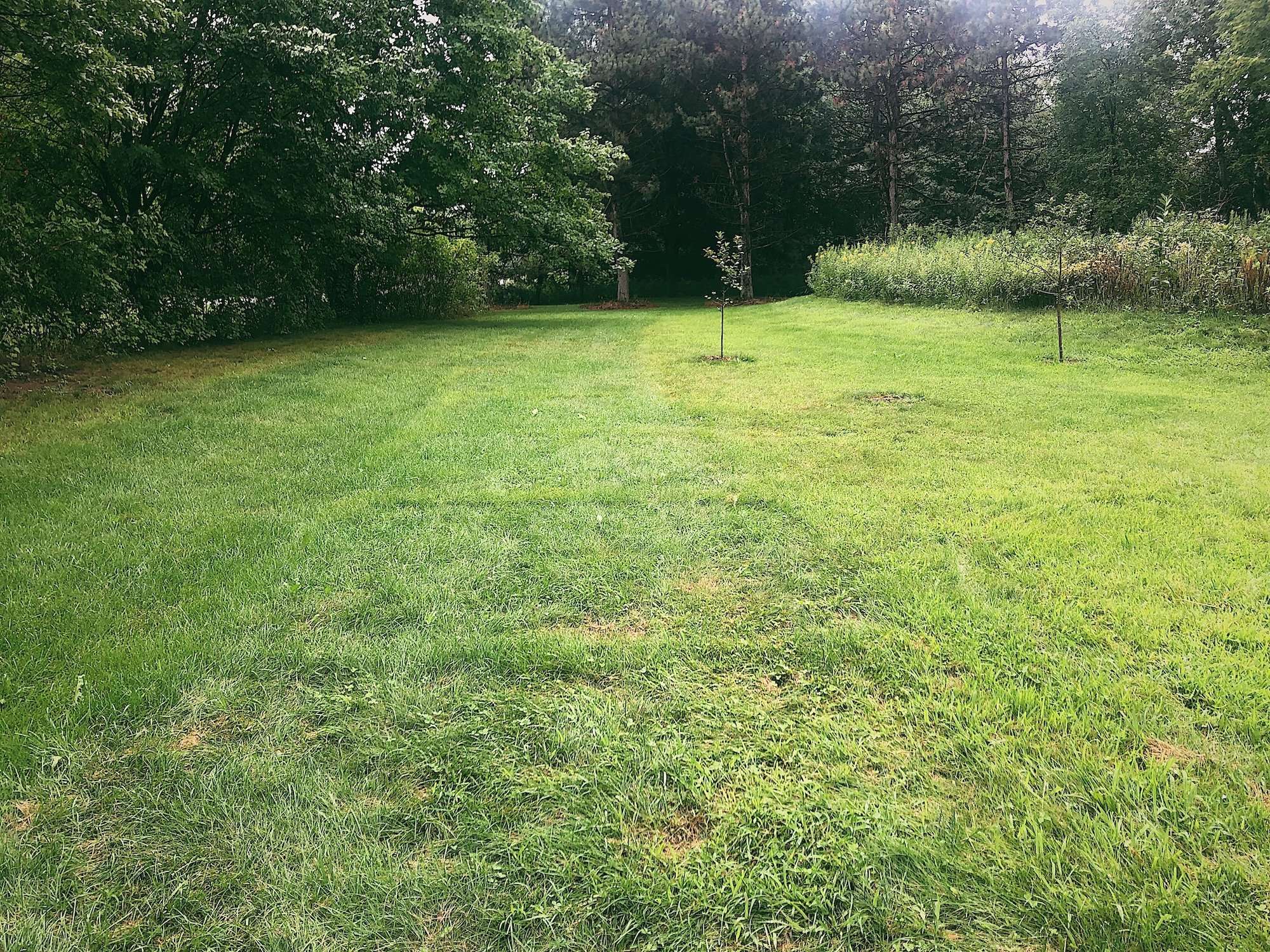
One key thing to note is that chicken poop is potent (especially when it’s fresh) and can easily burn your grass. I like to spray the area down with the hose after I move the chicken tractor daily to prevent this. Not a necessary step, but it’s nice to keep the grass alive and nice looking. It reduces the flies, too!
Lastly, it’s recommended to only run the chickens over the same area once per year, rather than coming back to it over and over. If you do this, then you’ll burn out the area with too much of a good thing, plus there’s less plant diversity if the chickens are heavily foraging an area multiple times.
Common Questions
Where can I buy Ranger chicks?
- Hoover’s Hatchery – This is where we’ve been buying ours the past 5 years!
- Freedom Ranger Hatchery – I’ve never used this hatchery, but it is popular.
- Murray McMurray Hatchery – We used them the first year, but prefer Hoover’s.
- Sometimes your local feed store or Tractor Supply will have them, too!
Can I breed my own Ranger chickens?
Since Rangers are a hybrid, they will not breed true. That means that even if you breed 2 Rangers together, you will not get an identical Ranger as a result and some undesirable traits may come out. If you want to get into breeding your own meat birds, you’ll need to use a purebred dual-purpose breed.
Should I buy Ranger roosters, pullets, or straight run?
This has been an ongoing question for me for years and I finally have it nailed down! It really comes down to you and your preferences.
Let’s get the lingo down first:
- Rooster: male chick
- Hen: female chick
- Straight Run: unsexed chick (so you’ll receive roughly 50% of each)
How do you choose?
- If you are on a tight timeline and/or budget, I’d pick roosters. They are usually ready for butchering at 11-13 weeks, whereas the hens often take 14-16 weeks. Because they finish faster, they consume less feed as well. You’ll notice my feed conversion in 2021 was my worst yet because we intentionally kept more hens.
- If your main concern is avoiding the fuss of crowing, the hormones, and the overall stinkiness of roosters (yes, they stink), I’d go with hens. I’ve found that the roosters start crowing a solid month before they are ready to butcher. If you’re in the country, this isn’t a big deal… but, if you’re trying to sneak them into your urban homestead it might not fly.
- If this is your first year raising broilers, or if you don’t have an agenda, I recommend straight run. The chicks are often cheaper that way, plus having them mature at different times is nice if you are just starting out. Butchering 10 chickens at a time is much more doable than all of a sudden needing to do 20.
How much space do they need?
If you’re running the traditional chicken tractor method like we do, we’ve found that 20-22 birds fit nicely in our modified 8’x8’ structure. During the first 2 years, we followed the written guidelines to use 25 birds within our space. However, it was a bit too crowded in my opinion so now we do 20-22 and that feels right.
We move the chicken tractor once daily, minus a period of about 2 weeks where we move it twice daily. So, that’s roughly 100 moves with 6400 square feet covered for a round of 20-22 red ranger chickens in an 8×8’ tractor.
If you live in town and are only raising a few broilers, you could get away with much less space if you’re diligent about supplying them with freshly picked weeds and garden scraps.
What should I feed red ranger chickens?
This was a major question of mine when I got started and it was so hard to find any answers. There’s plenty of information out there on how to feed Cornish Cross chickens, but not much on Rangers. I actually had to reach out to our local CSA TC Farm when we first started and they graciously filled me in on what they do. I am so thankful for them!
What I’ve found works well for me is:
- 21-22% protein the first 2-3 weeks
- Then, back off to 19-20% protein for the rest of the time
This gives them a little boost during the intense growth early on, but then prevents them from growing too fast later. Again, there’s no need to remove the feed at night like for the Cornish Cross.
What other meat chicken breeds can I raise?
If you aren’t convinced to raise Rangers yet, there are other options, too! Check out my articles The 5 Best Chickens for Meat and Eggs (Dual Purpose Breeds) and The 7 Best Meat Chickens for Your Homestead for some other ideas.
Can I raise meat chickens in the city?
Technically, you need to stay within your chicken limit per your city’s ordinances (which is typically 3-6 chickens). However, I like to bend the rules a bit. Especially if we’re talking about broilers, which are only going to be around for a few months.
If you have cool neighbors who won’t call the city on you, give it a try! Maybe even offer to have them over for a BBQ so they can benefit from you raising them, too! I know several people who have raised them in their backyard and butchered them in their garage successfully.
Where can I find a farmer that raises red ranger chickens?
If you just aren’t quite ready to raise them yourself, but you appreciate the benefits of Rangers over Cornish Cross, there certainly are other farmers out there who can hook you up.
Our favorite Minnesota CSA is TC Farm and they offer both Cornish Cross and Rangers! If you don’t live nearby, definitely check out Farm Match to find a local farm. Make sure to ask what breeds they raise. If they don’t raise Rangers, there’s a good chance they’ll know someone who does.
Where can I learn more about raising meat chickens?
The best place is my comprehensive course: “Raising Pastured Meat Chickens: From Chick to Drumstick.” In my course, I walk you through everything you need to know, including a tour of our chicken tractor, links to my favorite products, and an in-depth video of butchering day. Definitely check it out!
Final Thoughts
To be honest, it does take daily work and butchering day is certainly not my favorite, but I think taking responsibility for how your food is raised and treated is so important. It’s time that we, as a culture, shift away from consumerism and become a producer as much as we can.
There’s something special about that connection you have when you raise your own food – whether that’s garden produce, chicken eggs, honey, beef, pork, etc! We’ve lost touch with where our food comes from in our modern world, and I’m so proud of your willingness to reverse this!

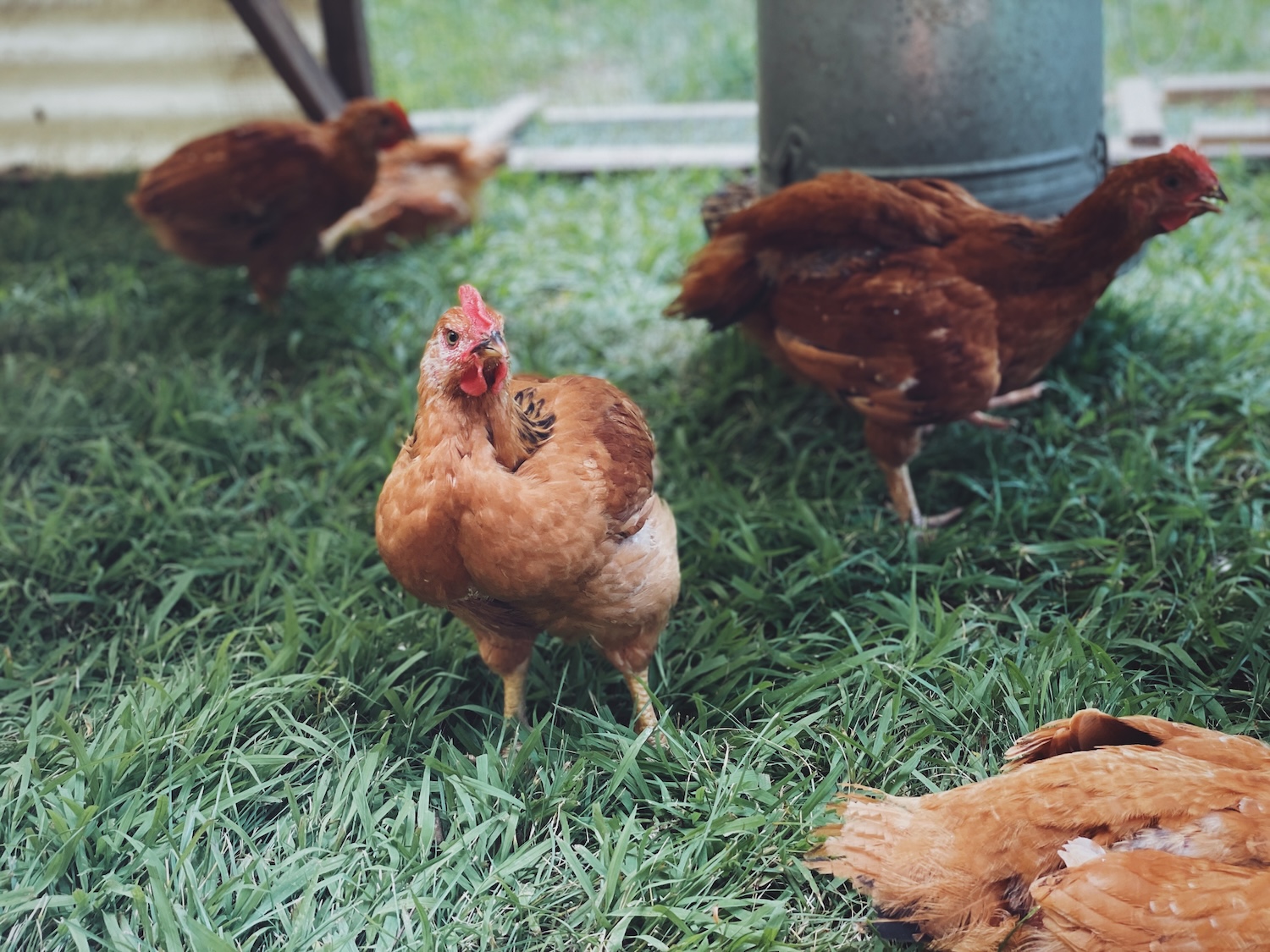
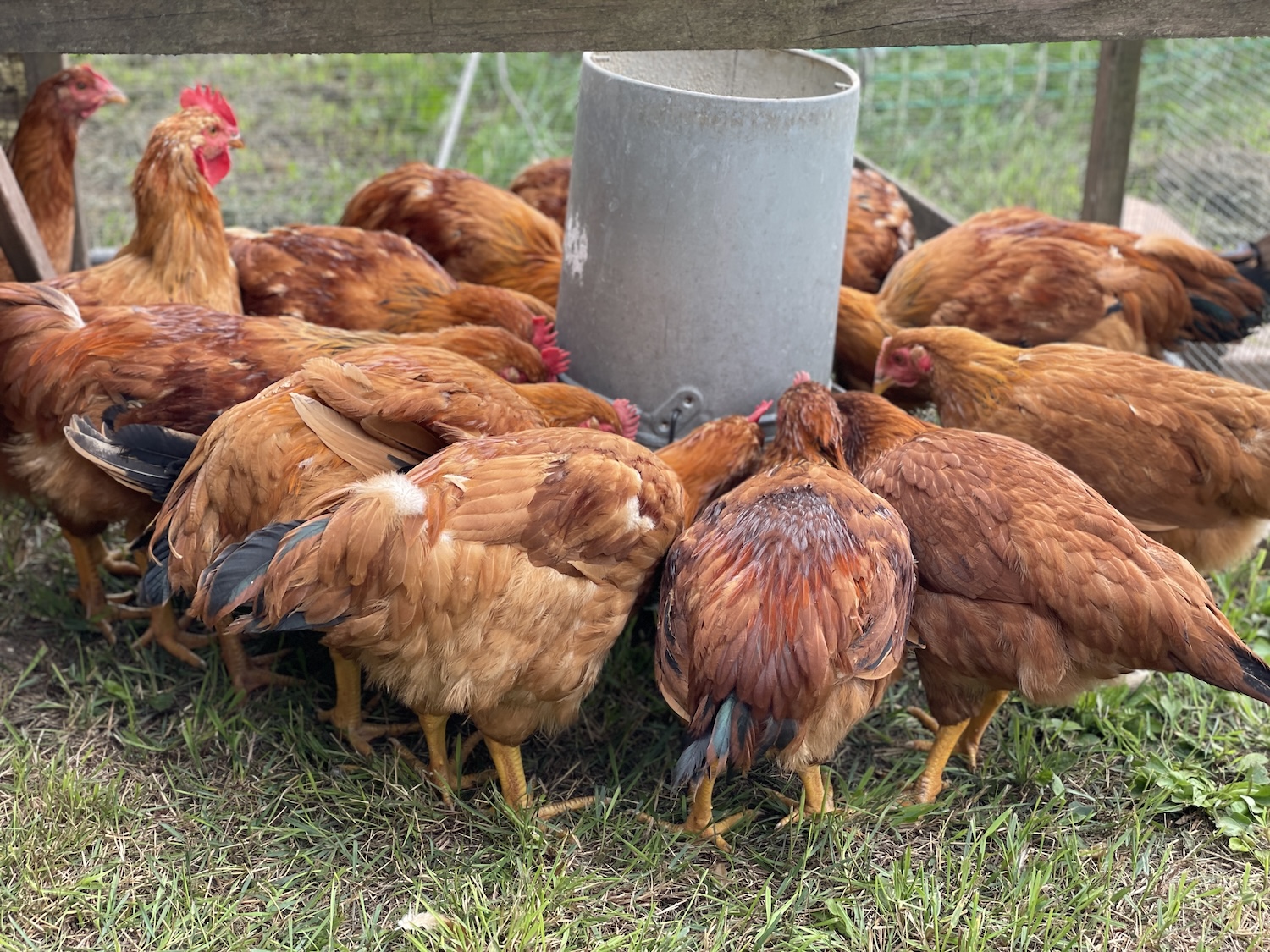
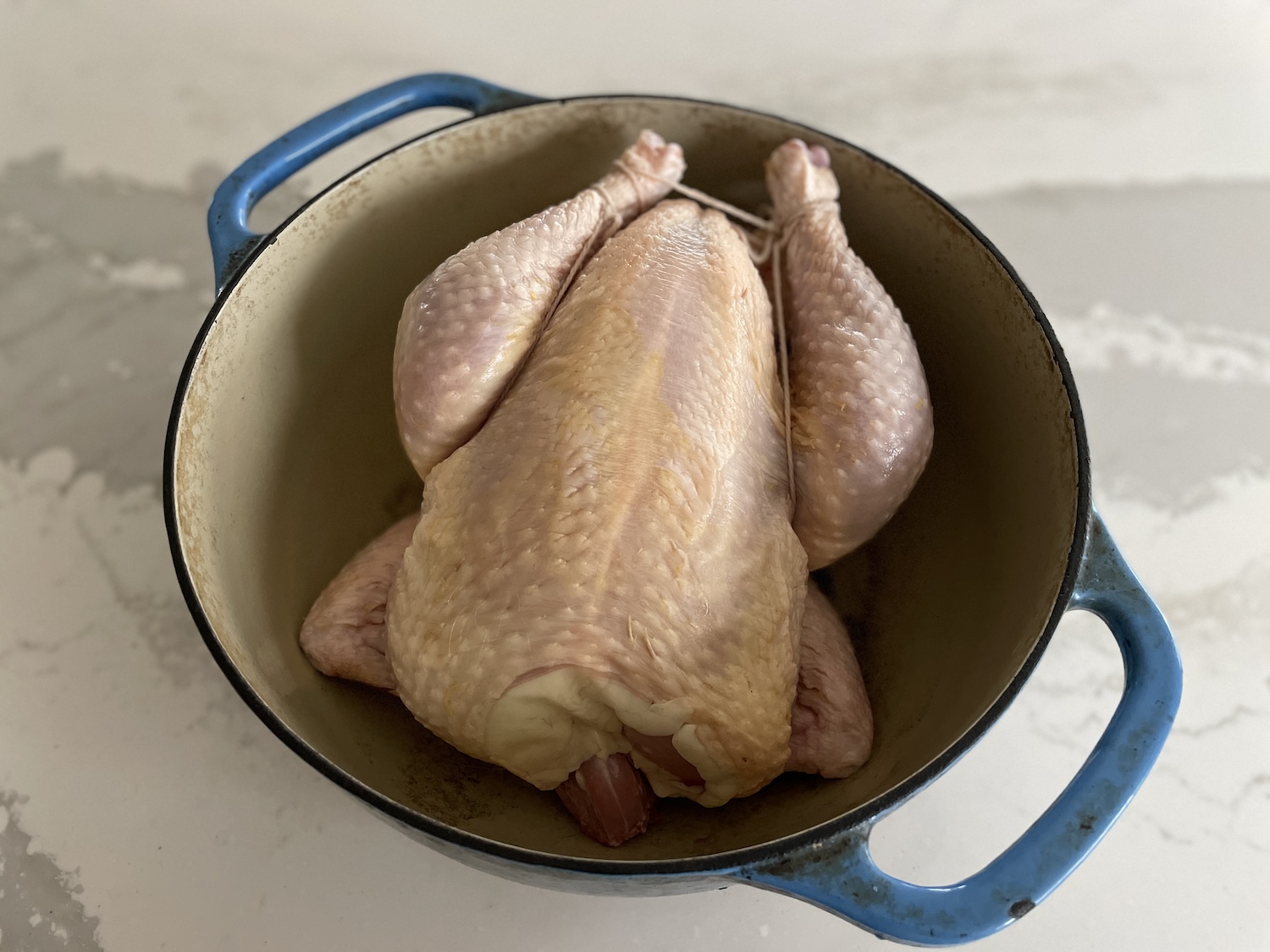
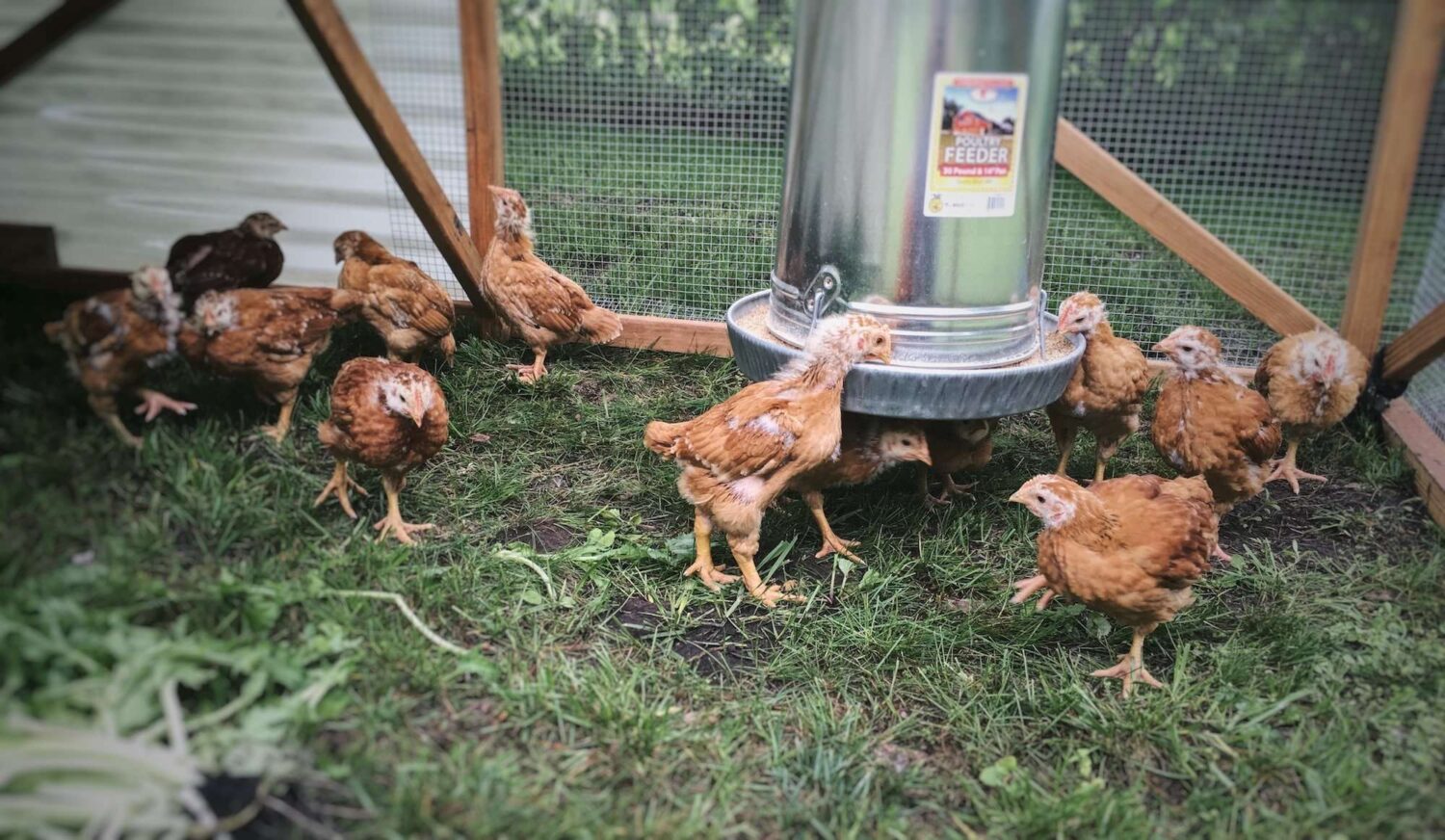
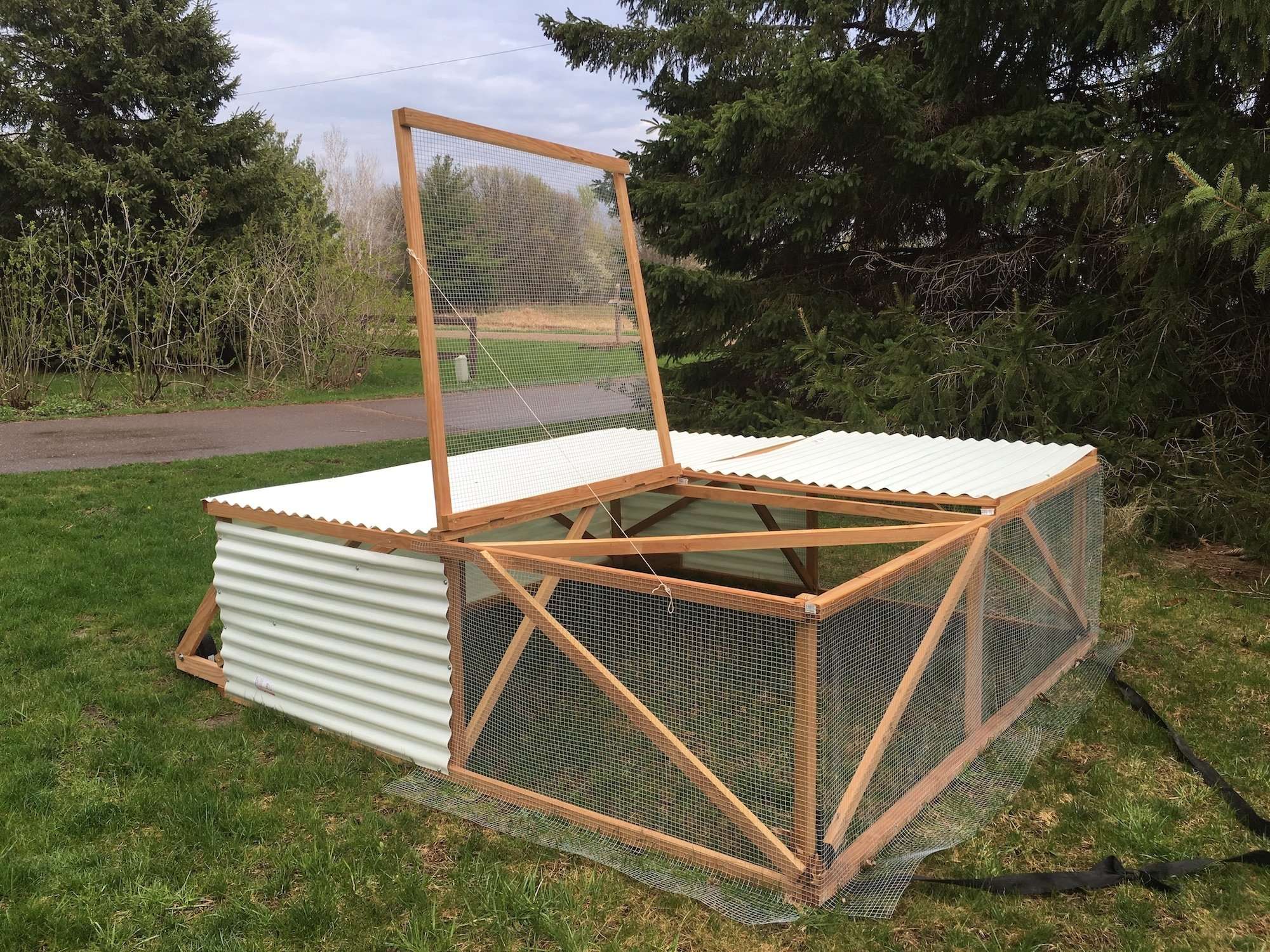
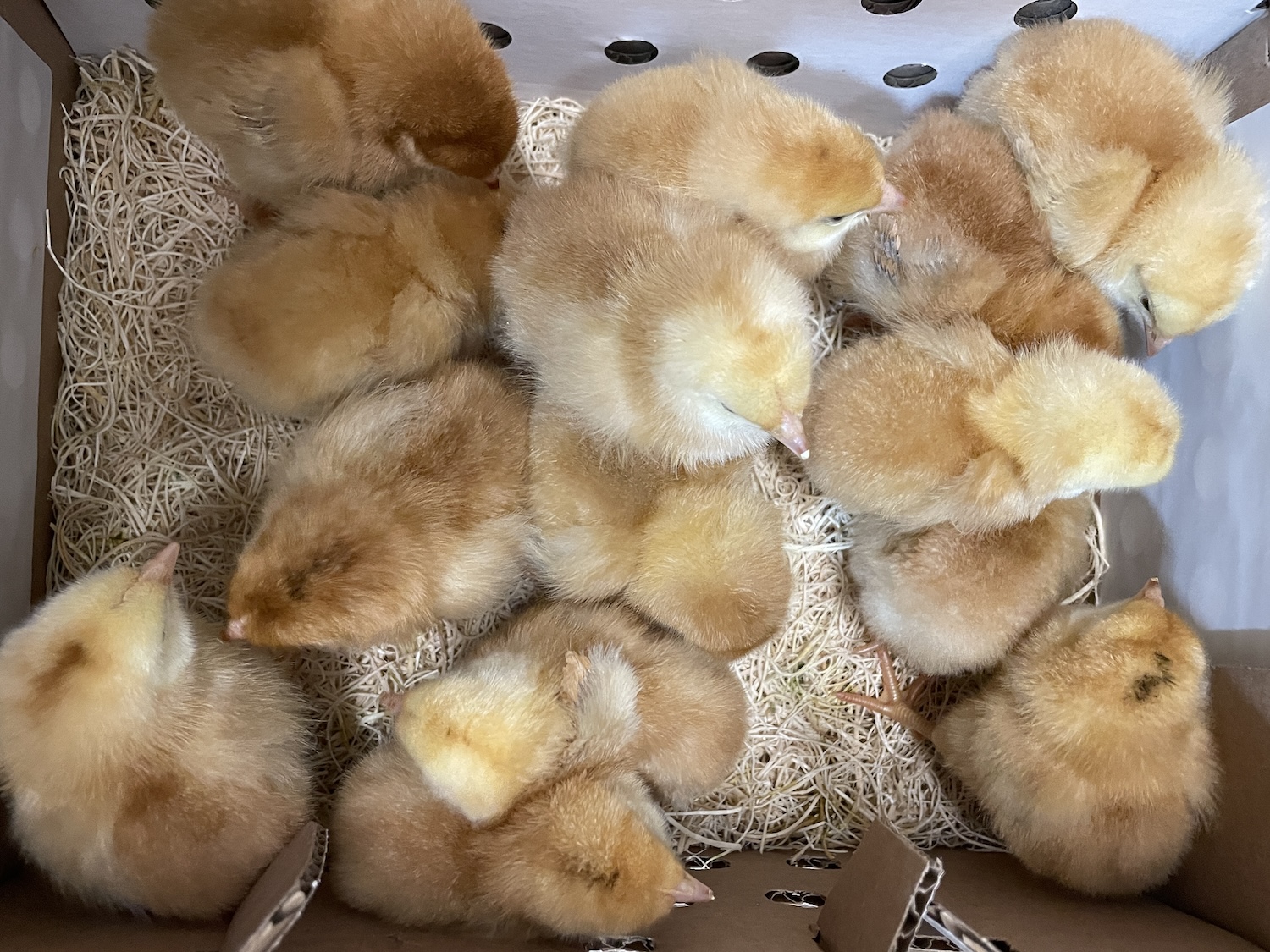
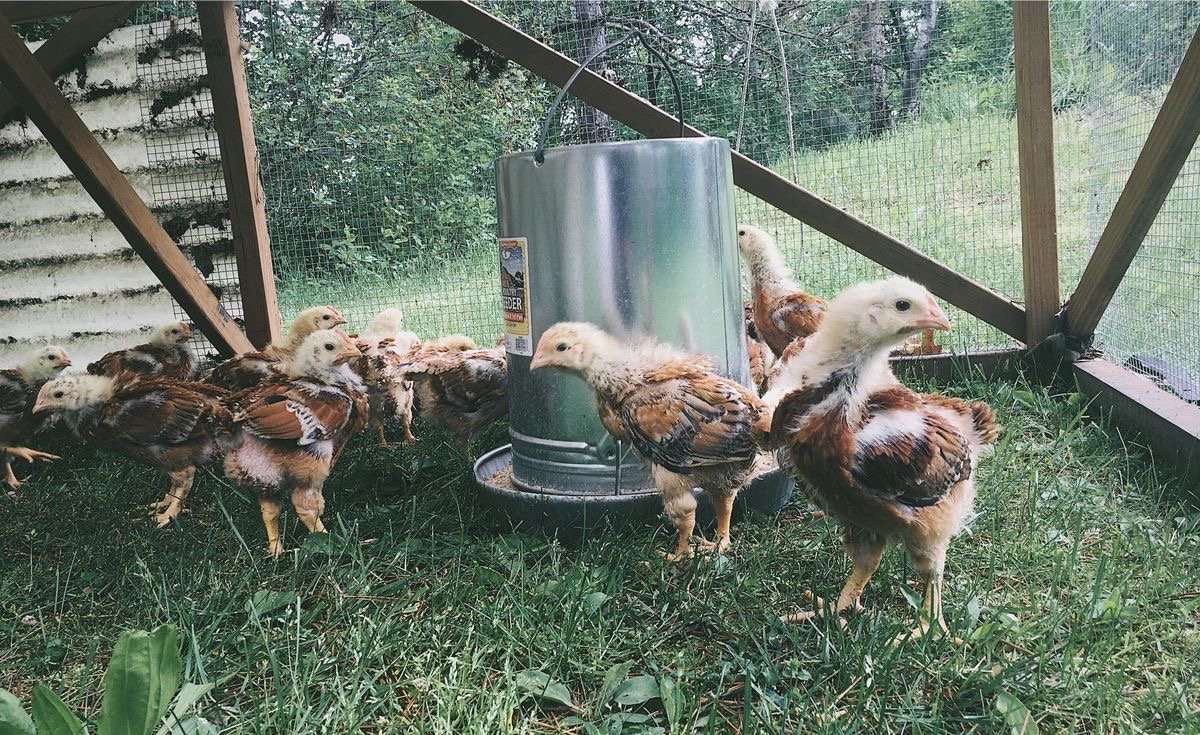
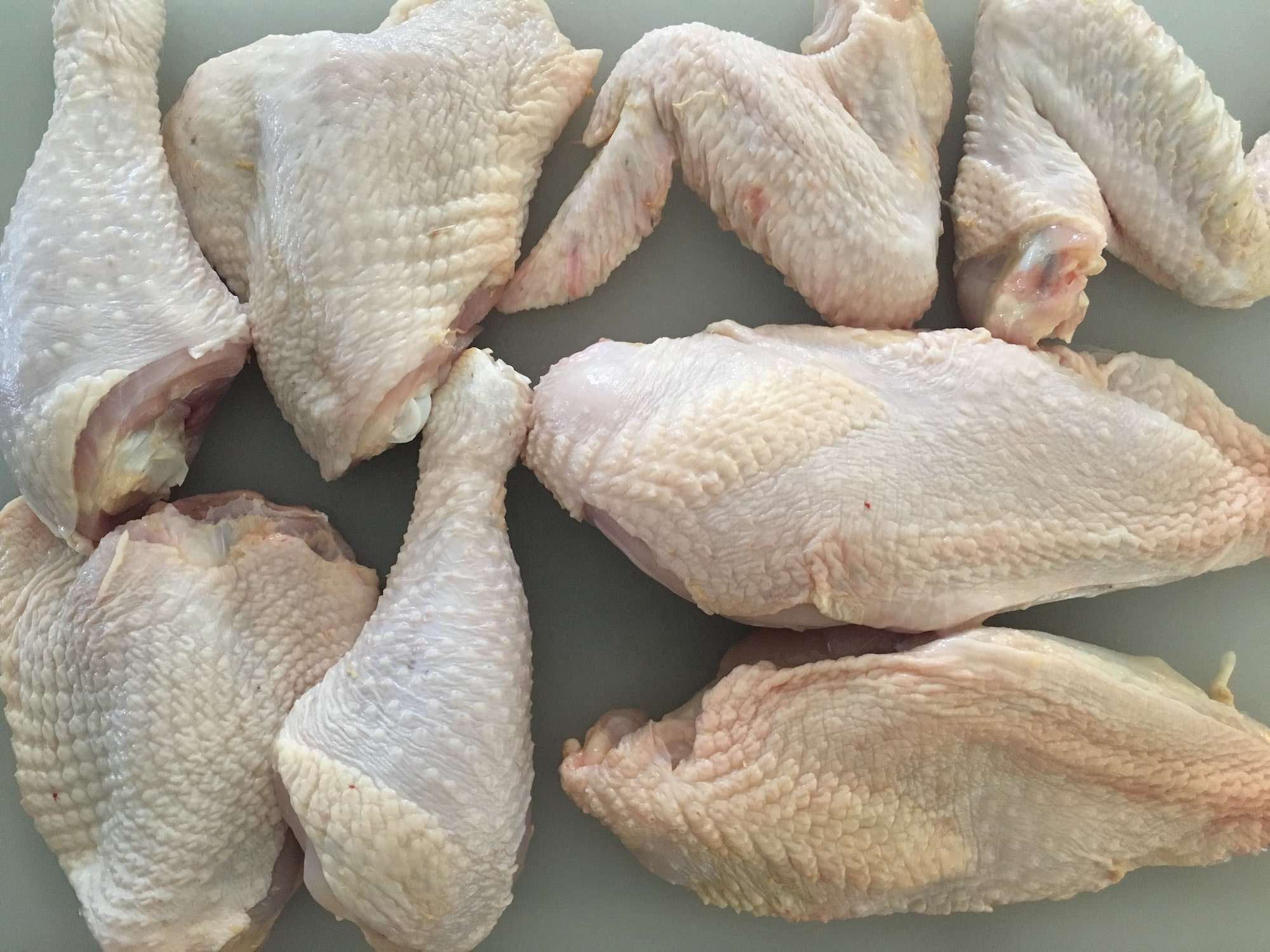

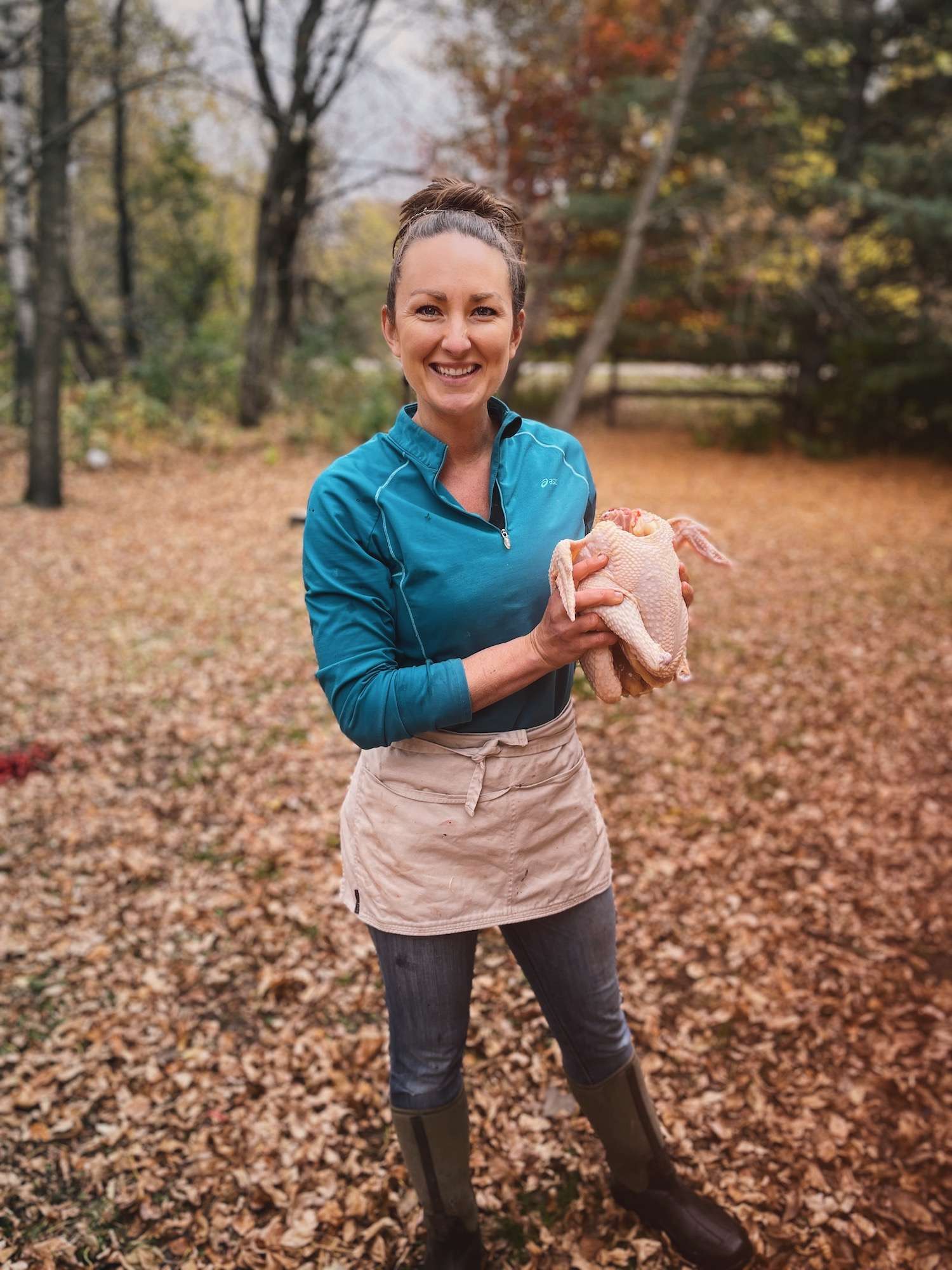


I raised Cornish cross meat chickens for 25 to 30 years. When starting out the birds, put them into a round 4 foot water tank with a heat lamp above. Chick’s like to huddle when cold so keep the lamp lower and raise up when they get older. Once they feather out, you don’t need the heat lamp any longer. Why the round tank, they don’t have corners to huddle in, and when they huddle they can suffocate, plus the heat is more even.
Great tips, thanks!
Hi. I’m getting g my Red Rangers delivered at the end of Sept. what do I need to do when the weather gets cold. I’m in Ga so I don’t get snow but it does get pretty cold. Any tips?
Hello there! Have you ever kept a Ranger hen and rooster to get fertile eggs? Or is that something they are not “naturally” proficient in? Thanks!
Lindsey from Maine:)
I haven’t tried this. It’s generally not recommended because the ranger breed gets so massive that they can end up with health issues and likely not be great at breeding, not to mention cost a lot of money to keep them going as breeding stock since they eat so much! Plus, since they are a hybrid, they won’t breed true. You won’t get a true red ranger out of them.
Thank you for your easy to understand explanations. I really enjoy reading your posts and the decision making process that goes into what you do.
Hi! I have a question! I inherited a Red Ranger Rooster and I want to know will he be okay living in a chicken run with the hens. We have coyotes and I work and am gone, no one to watch the chickens, so no time to free range. Will he be okay?
That should be fine, but if he’s in a confined chicken run he won’t be “pasture-raised” if you’re looking to raise pasture-raised meat. If you’re wanting to keep him as a pet, be mindful of how large he gets. Red rangers are certainly better than cornish cross, but they can still get quite large and may need to be butchered if he is having leg issues or can’t get up to the roost with everyone else.
I am so impressed with your knowledge and information. You write well and the topics are easy to follow. Keep it up and I’ll keep reading.
I’m so pleased to hear that you’ve been enjoying my posts! I’m glad you’re here 🙂